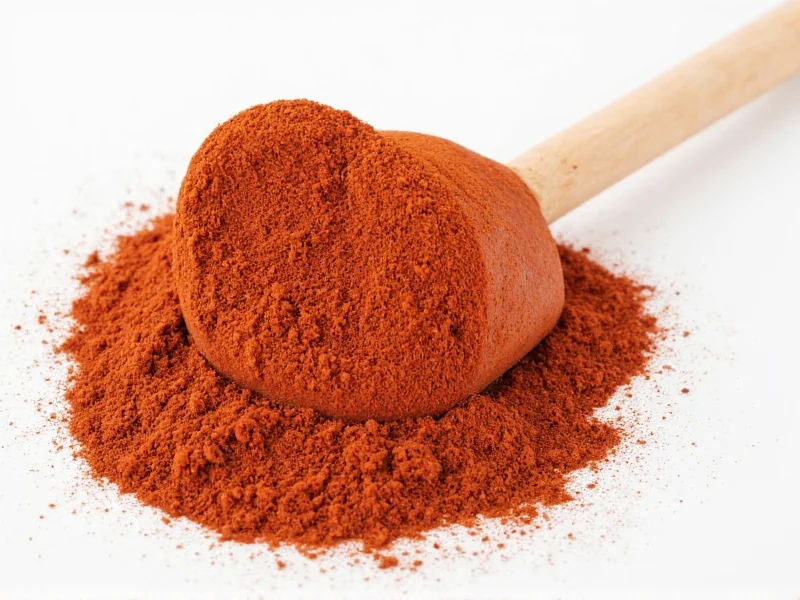Understanding what is dry rub and how to use it properly transforms ordinary proteins into extraordinary dishes. This essential seasoning technique has been used for centuries across culinary traditions worldwide, from Southern barbecue pits to Mediterranean kitchens. The magic happens when the salt in the rub draws out surface moisture through osmosis, creating a concentrated layer of seasoning that caramelizes during cooking.
Key Components of an Effective Dry Rub
Every successful dry rub contains four fundamental elements that work together to create balanced flavor profiles:
| Component | Function | Common Examples |
|---|---|---|
| Salt | Moisture extraction and flavor enhancement | Kosher salt, sea salt, smoked salt |
| Sugar | Caramelization and flavor balancing | Brown sugar, white sugar, turbinado sugar |
| Spices | Depth and complexity | Paprika, cumin, coriander, chili powder |
| Herbs | Freshness and aromatic notes | Thyme, oregano, rosemary, garlic powder |
Dry Rub vs. Marinade: Understanding the Difference
Many home cooks confuse dry rubs with marinades, but they function differently. What is dry rub's primary advantage over wet marinades? Dry rubs create a superior crust on meats because they don't introduce additional moisture that would steam the surface rather than allowing proper searing. While marinades work through acid-based tenderization, dry rubs rely on salt's ability to modify protein structure without altering the meat's texture.
When considering what is dry rub for steak specifically, the absence of liquid ingredients means the high heat of grilling or pan-searing immediately caramelizes the sugar components, creating that coveted Maillard reaction without boiling off excess moisture first.
How to Apply a Dry Rub Properly
The technique matters as much as the ingredients when using dry rubs. Follow these professional steps for optimal results:
- Dry the surface: Pat proteins completely dry with paper towels before application
- Oil lightly: Apply a thin coat of neutral oil to help the rub adhere
- Season generously: Press the rub firmly into all surfaces using your fingertips
- Rest time: Allow at least 30 minutes (or up to 24 hours for large cuts) before cooking
- Room temperature: Bring seasoned meat to room temperature before cooking
Popular Dry Rub Variations by Cuisine
Different culinary traditions have developed signature dry rub blends. Understanding what is dry rub in various contexts helps you select the right blend for your dish:
- American BBQ Rub: Features paprika, brown sugar, garlic powder, and cayenne for that classic Southern flavor profile
- Caribbean Jerk Rub: Blends allspice, thyme, cinnamon, and Scotch bonnet pepper for bold, spicy notes
- Mediterranean Herb Rub: Combines oregano, rosemary, garlic, and lemon zest for lighter proteins
- Coffee-Chili Rub: Modern blend featuring ground coffee, ancho chili, and cocoa powder for rich, complex steak rubs
Timing Considerations for Maximum Flavor
Many home cooks make the mistake of applying dry rubs immediately before cooking. For what is dry rub to truly shine, timing matters significantly. For thin cuts like chicken breasts or fish fillets, 30-60 minutes of resting time allows surface penetration. For larger cuts like brisket or pork shoulder, 12-24 hours in the refrigerator lets the salt work its magic through the entire cut.
When exploring what is dry rub for ribs specifically, the 12-24 hour window proves crucial as the connective tissues absorb the seasoning while the salt breaks down collagen, resulting in more tender, flavorful meat.
Common Dry Rub Mistakes to Avoid
Even experienced cooks sometimes miss these critical points when working with dry rubs:
- Using table salt: Its fine crystals can make rubs overly salty—opt for kosher salt's larger flakes
- Skipping the rest period: Applying rubs immediately before cooking prevents proper flavor development
- Overpacking the rub: Pressing too hard creates thick clumps that burn during cooking
- Adding sugar too early: High sugar content rubs applied more than 2 hours before cooking can caramelize unevenly
- Not adjusting for cut thickness: What works for steak won't necessarily work for poultry or vegetables
Creating Your Own Custom Dry Rub
Mastering what is dry rub means understanding how to customize blends for your specific needs. Start with this basic ratio for what is dry rub recipe foundation:
- 4 parts base (salt/sugar)
- 2 parts primary flavor (paprika/chili powder)
- 1 part supporting spices (cumin/coriander)
- 1/2 part accent flavors (mustard powder/ginger)
When developing what is dry rub for chicken, increase herbal components and reduce heat elements. For what is dry rub for pork, emphasize sweet and smoky elements. The beauty of dry rubs lies in their adaptability—taste your blend before applying by mixing a small amount with oil to simulate cooking conditions.
Storage and Shelf Life of Dry Rubs
Homemade dry rubs maintain peak flavor when stored properly. Keep your blends in airtight containers away from light and heat. Most dry rubs retain optimal flavor for 3-6 months, though sugar-based rubs may clump over time. For extended storage, freeze your dry rub in an airtight container for up to one year without significant flavor degradation.
When making large batches of what is dry rub for brisket or other large cuts, consider separating the salt component and adding it just before use. This prevents the salt from drawing moisture from other ingredients and maintains the rub's texture and potency.











 浙公网安备
33010002000092号
浙公网安备
33010002000092号 浙B2-20120091-4
浙B2-20120091-4